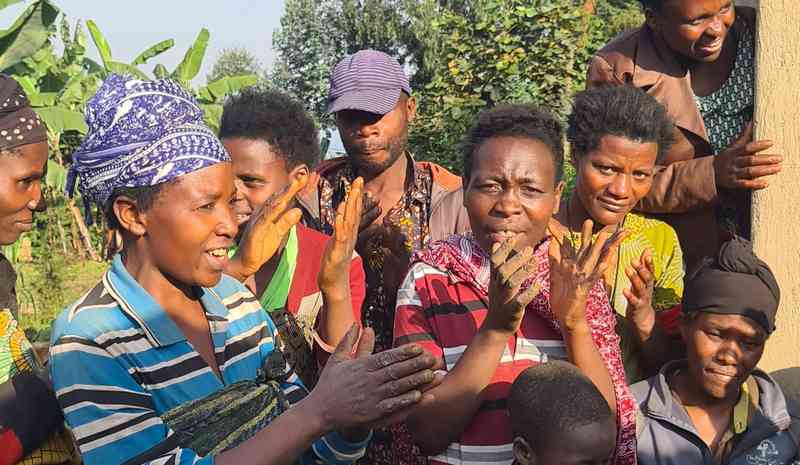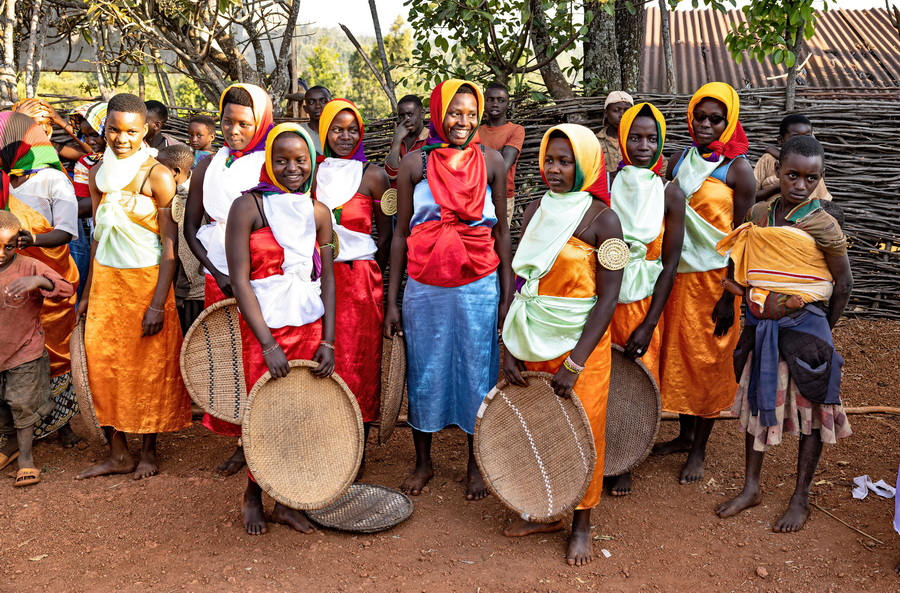Tribes In Rwanda
Tribes In Rwanda. Rwanda is a tiny landlocked nation in Central Africa that shares borders with Tanzania to the East, Burundi to the South, Uganda to the North, and the Democratic Republic of the Congo to the West. Rwanda is referred to as the “land of a thousand hills,” the Switzerland of Africa, and is known for its many hills, which are the reason it is marked on the globe map. The final mountain gorillas in the world, who are housed at the Volcanoes National Park, are only found in Rwanda.
Many tourists visit Rwanda in search of experiences such as primate safaris, animal safaris, or mountain gorilla climbing; however, some visitors are more interested in integrating themselves into the local culture to gain a deeper understanding of the Rwandan people. This essay offers some perspectives about Rwandans.
The Hutu, Tutsi, and Twa people are the three tribes that make up Rwanda‘s original or principal native population. Currently, the three tribes coexist peacefully and harmoniously in this small but rapidly growing nation. The conflicts between these two individuals served as fuel for the genocide in Rwanda in 1994, but the quarrel is now in the past. All three of these individuals are from Rwanda; their traditions are similar, however they also have certain differences.

The people of Twa;
It is possible to see a family of the twa people during your Rwanda safari tour. The twa people are a traditional community that has survived in the forested areas and are thought to have been the first people to arrive in Rwanda. They also share a close relationship with the Central Africans who live in the forests. Out of the three tribes in Rwanda, the twa people group has the lowest population size.
The twa are difficult to differentiate from the other tribes because of their shared beliefs and language. Even though they are modern, the Twa people have managed to maintain their traditional ways and culture with very little impact from the outside world. In 2004, the estimated population of Twa people in Rwanda was approximately 3,000, residing in 600 households.
Although they were formerly forest dwellers and only lived in the forested areas, you can probably find a small number of them living in Rwandan cities and away from the forest. In the traditional context, the Twa people are categorized as laborers and frequently work as handymen in the pottery industry. Almost none of them own cattle or land.

The Hutu population;
The Hutu tribe, which is based in Rwanda and has some members living in Burundi, is thought to be the second largest in terms of population. There are thought to be 10 million Hutus, the most of whom are Christians. The Hutu people are Bantu speakers, which is one of the many cultural and traditional traits that they have in common with the Tutsi and Twa people.
Prior to 1994, when the Tutsi people sought to seize control and the two engaged in a power struggle that saw the Tutsi emerge victorious, the Hutu people dominated Rwanda and held the majority of leadership positions. This is when the Rwandan genocide of 1994 began.
All three of them speak Kinyarwanda, also known as Kirundi in Burundi and Kinyarwanda in Rwanda. Although the dialects are similar, you can still distinguish the variations in word meaning and pronunciation. Although the majority of them are Christians, this does not negate their traditional beliefs in the abazima, the spirits of ancestors who decide a person’s fate while they are alive. Some people continue to pray to these spirits in hopes of receiving protection and direction.
The Hutu people eat a variety of staple foods, including sweet potatoes, cassava, beans, corn, millet, and sorghum. While milk is also a highly prized delicacy, goat milk and meat are frequently connected to poverty or those from lower socioeconomic classes. Farmers, the Hutu people are generally more interested in maintaining herds of cattle than in growing crops.
The people of Tutsi;
After the Rwandan massacre in 1994, the Tutsi people of Rwanda assumed power and remain in that position to this day. Rwanda, Burundi, and the northeastern region of the Democratic Republic of the Congo—formerly known as Zaire—are home to the Tutsi population. It was projected in 1994 that there were 13 million Tutsis in the world.

Cattle ranchers by trade, the Tutsi people were regarded as the affluent members of society. In the past, the Tutsi people would trade their cattle for Hutu labor or even to win political favor and allegiance. These people can also communicate in Kinyarwanda, the common Bantu language, and few can also speak French, which is spoken in formal settings like schools.
The Tutsi are Christians, but the elders still pray to “Imaana,” who is said to bestow fertility and prosperity upon women. Imaana’s authority is comparable to that of the King. The Tutsi are known for their strong regard and belief in abazima; those who do not respect them are allegedly subject to punishment.
The Tutsi frequently married other Tutsis, but due to the present lifestyle shift, there have been several intertribal marriages between the Tutsis and other tribes. The Tutsis’ main dietary staples are cow’s meat, milk, and butter. Only on exceptional instances are the cows butchered for human consumption.
A visit to one or more of the cultural heritage sites, such as the Nyanza King’s Palace en way to the Nyungwe Forest National Park or the Iby’iwachu Cultural Center near the Volcanoes National Park, will allow you to observe and appreciate the unique history of these tribes of Rwanda. As you tour with Budget Gorilla Trekking, you can incorporate several of these locations into your Rwanda safari. Get in contact with us and let us to plan your carefully curated Rwanda trips.



